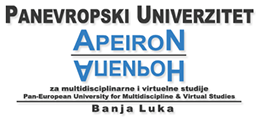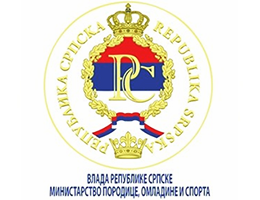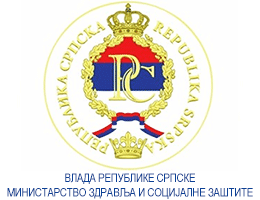Relations Between the World Record in Running at 100m and Altitude and Wind Speed
Volume 15, Issue 1 (2025)
Volume 15, Issue 1 (2025)
Relations Between the World Record in Running at 100m and Altitude and Wind Speed
Abstract:
A sprint is a dynamic and explosive cyclic
movement determined by an ability to accelerate, a size
of maximum speed and an ability to maintain the speed in
relation to an onset of fatigue, so many factors can affect
a sprint result, whether they are of an internal nature -
motivation, technique, readiness and fatigue, or external -
wind direction and strength, altitude, temperature, texture
and hardness of substrate. The goal of the research was to
determine the connection between altitude and wind speed
with the achieved results in the 100m running for men,
which are categorized as world records (manually and
electronically measured results) and to predict the results
depending on altitude and wind speed, and to determine
the best achieved times in years in which no world records
were recorded and their connection with altitude and wind
speed, and to determine the periods of stagnation of the
results, in order to determine, after specifying those periods,
whether the altitude of the cities where the records
were achieved and the wind speed were possible causes
of the stagnation measured during the achievement of the
results, which would all help to create more optimal conditions
for achieving a better result and setting a new record
in the 100m running discipline. After all the analyses, that
is, by observing the results of recognized world records
measured manually and electronically, it can be concluded
that the wind speed had a connection and prediction in the
achievement of the world record in the period from 1912
to 1968 when the results were measured manually (if the
wind increased by 1 ms-1 the result improved by 0.08 sec),
while the altitude value had a connection and prediction
in the achievement of world records in the period from
1968 to 2009 when the results were recorded by electronic
measurement (if the altitude increased by 1m the result improved
by 0.00008 sec).
Keywords:
altitude, sprint, wind speed, world record
Full Text:
References:
Asafa Powell profile. Retrived from https://worldathletics.org/athletes/jamaica/asafa-powell-1420, on 25.03.2023
Bakov, J. (1961). Kod nas postoji danas atletski život, piščevo izdanje. Ruski Krstur. [in Serbian]
Behncke, H. (1997). Optimization models for the force and energy in competitive running. J Journal of Mathematical Biology, 35, 375–390. https://
doi.org/10.1007/s002850050057
Brüggemann, G.P., Koszewski, D., & Müller, H. (1999). Biomechanical Research Project Athens 1997, Final report. Oxford, Meyer & Meyer Sport,
pp. 12–41.
Carl Lewis. Retrived from www.usatf.org/athlete-bios/carl-lewis, on 10.03.2023
Čoh, M., Milanović, D., & Kampmiller, T. (2001). Morphologic and kinematic characteristics of elite sprinters. Collegium Antrop, 25(2), 605–610.
UDC 572.512:796.42
Ćirić, A. (1996). Igre u Olimpiji. Beograd, RS: Vreme knjige. [in Serbian]
Dapena, J. & Feltner, M.E. (1987). Effects of wind and altitude on the times of 100-meter sprint races. Int. J. Sport Biomech, 3, 6–39. https://doi.
org/10.1123/ijsb.3.1.6
Delecluse, C. H., Ponnet, H., & Diels, R. (1998). Stride characteristics related to running velocity in maximal sprint running. Riehle, H.J., & Vieten,
M.M. (Ed.), Proceedings II of XVI International Symposium on Biomechanics in Sports. (pp. 146–148). ISBS.
Dik, F. (1980). Trening vrhunskih atletičara. Beograd, RS: „Partizan“ Novinska izdavačka propagandna radna organizacija Saveza za fizičku kulturu
Jugoslavije. [in Serbian]
Dikić, N. (2007). 100 pitanja o dopingu. Beograd, RS: SIA. [in Serbian]
Donald Quarrie. Retrived from https://olympics.com/en/athletes/donald-quarrie, on 27.02.2023
di Prampero, P. E., Fusi, S., Sepulcri, L., Morin, J. B., Belli, A., & Antonutto, G. (2005). Sprint running: a new energetic approach. The Journal of
experimental biology, 208(Pt 14), 2809–2816. https://doi.org/10.1242/jeb.01700
Ferro, A., Rivera, A., & Pagola I. (2001). Biomechanical analysis of the 7thIAAF World Championships in Athletics – Seville 1999. New Studies in
Athletics, (1,2). 25–60.
Gajer, B., Thepaut-Mathieu, C., & Lehenaff, D. (1999). Evolution of stride and amplitude during course of the 100 m event in athletics. New Studies
in Athletics, 3, 43–50.
Harland, M. J., & Steele, J. R. (1997). Biomechanics of the sprint start. Sports medicine (Auckland, N.Z.), 23(1), 11–20. https://doi.org/10.2165/00007256-
199723010-00002
History of face timing. Retrived from https://timingsense.com/en/blog/history-of-race-timing/, on 15.03.2023
Hollings, S.C.; Hopkins, W.G., & Hume, P.A. (2012). Environmental and venue-related factors affecting the performance of elite male track athletes.
Eur. J. Sport Sci., 12, 201–206.
Hollings, S.C., Hopkins, W.G., & Hume, P.A. (2012). Environmental and venue-related factors affecting the performance of elite male track athletes.
Eur. J. Sport Sci., 12, 201–206. doi:10.1080/17461391.2011.552640
International Association of Athletic Federations (IAAF)., (2015). IAAF Competition Rules 2016–2017; International Association of Athletic Federations:
Monaco, Monaco,; pp. 168–169; 269–279.
James Ray Hines. Retrived from https://olympics.com/en/athletes/james-ray-hines, on 12.03.2023
Jotov, N., Perišić, D., Milosavlјević, V., & Miletić, V. (2022). Perspektiva razvoja atletskog programa kroz prizmu Olimpijskih igara. In Stanković, V.,
Lilić, Lj., Stojanović, T., Cicović, B., & Ilić, I. (Ed.), Zbornik radova, 9. Međunar,odna naučna konferencija „Antropološki i teoantropološki
pogled na fizičke aktivnosti od Konstantina Velikog do danas (pp. 261-265). Kosovska Mitrovica, RS: Fakultet za sport i fizičko vaspitanje u
Leposaviću, Univerzitet u Prištini. UDC: 796.42.032.2 [in Serbian]
Krzysztof, M., & Mero, A. (2013). A kinematics analysis of three best 100 m performances ever. Journal of Human Kinetics, 36, 149-60. doi: 10.2478/
hukin-2013-0015. PMid: 23717364; PMcid: PMC3661886.
Linthorne, N. P. (1994). The Effect of Wind on 100-m Sprint Times. Journal of Applied Biomechanics, 10(2), 110–131. doi:10.1123/jab.10.2.110
Linthorne, N. P. (2016). Improvement in 100-m Sprint Performance at an Altitude of 2250 m. Sports, 4, 2-29. doi:10.3390/sports4020029
Linthorne, N.P. (2000). In The engineering of sport: research development and innovation. Subic, A.J. &. Haake, S.J. (Ed.). Proceedings of the 3rd
International Conference on The Engineering of Sport (pp. 451). Oxford., Edited by Blackwell Science.
Mackala, K. (2007). Optimisation of performance through kinematic analysis of the different phases of the 100 meters. New Studies in Athletics, 22(2),
7–16.
Matthews, P. (2015). Athletics 2015: The International Track and Field Annual. York, UK: Sports Books. pp. 255–256.
Mero, A., Komi, P.V., & Gregor, R.J. (1992). Biomechanics of sprint running. A review. Sports Med. 13, 376–392. Doi: 10.2165/00007256-199213060-
00002; PMid: 1615256
Mitrović, D., Kantar, M., Rajković, Ž., & Miletić, V. (2019). Predlog kriterijuma za određivanje nadležnih Granskih sportskih saveza za sportske grane
i oblasti sporta u Republici Srbiji. Knjiga radova 1. Nacionalne naučne i stručne konferencije ”Aktuelnosti u teoriji i praksi sporta, fizičkog
vaspitanja i rekreacije” (pp. 202-208). Beograd, RS: Fakultet sporta i fizičkog vaspitanja. UDK 796/799(497.11) [in Serbian]
Mureika, J. R. (2001). A realistic quasi-physical model of the 100 m dash. Canadian Journal of Physics, 79(4), 697-713. https://doi.org/10.1139/
p01-031
Mureika, J. R. (2003). Modeling wind and altitude effects in the 200 m sprint. Canadian Journal of Physics, 81(7), 895–910. doi:10.1139/p03-062
Mureika, J.R. (2006). The effects of temperature, humidity, and barometric pressure on short-sprint race times. Can. J. Phys., 84, 311–324. https://doi.
org/10.1139/p06-057
Nigg, B.M., & Yeadon, M.R (1987). Biomechanical aspects of playing surfaces. J Sports Sci. 5(2) 117-45. Doi: 10.1080/02640418708729771; PMid:
3326948
Novacheck, T. (1998). The biomechanics of running. Gait & posture, 7(1), 77-95.
Outdoor men senior 100 meters. Retrived from https://worldathletics.org/records/all-time-toplists/sprints/100-metres/..., on
11.03.2023
Perišić, D. (2011). Uticaj svetskog rekorda na razvoj atletike. Doktorska disertacija, Beograd, Fakultet sporta i fizičkog vaspitanja. [in Serbian]
Perišić, D., Milosavlјević V., Jotov N., & Rajković Ž. (2022). Fenomen svetskih rekorda u atletici. In Stanković, V., Lilić, Lj., Stojanović, T., Cicović,
B., & Ilić, I. (Ed.), Zbornik radova, 9. Međunar,odna naučna konferencija „Antropološki i teoantropološki pogled na fizičke aktivnosti od Konstantina
Velikog do danas (pp. 266-271). Kosovska Mitrovica, RS: Fakultet za sport i fizičko vaspitanje u Leposaviću, Univerzitet u Prištini.
UDC: 796.42.092.2 796.092.2 [in Serbian]
Percy Williams. Retrived from www.britannica.com/biography/Percy-Williams, on 12.03.2023
Ralph-Metcalfe, biography. Retrived from https://www.britannica.com/biography/Ralph-Metcalfe on 13.03.2023
Skembler, G. (2007). Sport i društvo, istorija moć i kultura. Beograd, RS: CLIO. [in Serbian]
Stacey, F.D. & Davis, P.M. (2008). Physics of the Earth, 4th ed.; Cambridge University Press: Cambridge, UK: p. 123.
Stafilidis, S., & Arampatzis, A. (2007). Muscule-tendon unit mechanical and morfological properties and sprint performance. J Sports Sci. 25(9) 1035-
46. Doi: 10.1080/02640410600951589; PMid: 17497405
Stefanović, Đ. (1992a). Atletika 2, nastanak i razvoj atletskih disciplina. Beograd, RS: Fakultet fizičke kulture Univerziteta u Beogradu. [in Serbian]
Stefanović, Đ. (1992b). Atletika 1, Tehnika. Beograd, RS: Fakultet fizičke kulture Univerziteta u Beogradu. [in Serbian]
Steve Williams frofile. Retrived fromhttps://worldathletics.org/athletes/united-states/steve-williams-14355979, on 12.03.2023
Stefanović, Đ. (2006). Teorija i praksa sportskog treninga I deo, Gnosis. Beograd, RS: Fakultet fizičke kulture Univerziteta u Beogradu. [in Serbian]
This day in history. Retrived from www.history.com/this-day-in-history/owens-wins-4th-gold-medal, on 10.03.2023
Thomas Edward (Eddie) Tolan III. Retrived fromhttps://michigansportshof.org/inductee/eddie-tolan/, on 09.03.2023
Usain Bolt. Retrived from https://usainbolt.com/athlete/, on 15.03.2023
Valery Borzov. Retrived from https://www.britannica.com/biography/Valery-Borzov, on 12.03.2023
Zanca, R. (2019). The evolution of world records at 100 meter dash and the dynamics of the factors that influenced the sprinters performance capacity.
Conference: 5TH International Conference of Universitaria Consortium cluj-Napoca – 2019, At: Cluj-Napoca, Romania,1-10.
Ward-Smith, A.J. (1984). Air resistance and its influence on the biomechanics and energetics of sprinting at sea level and at altitude. J. Biomechanics,
17, 339–347. https://doi.org/10.1016/0021-9290(84)90028-9
Ward-Smith, A.J. (1999). New insights into the effect of wind assistance on sprinting performance. J. Sports Sci.,17, 325–334. Doi:
10.1080/026404199366037; PMid: 10373041






